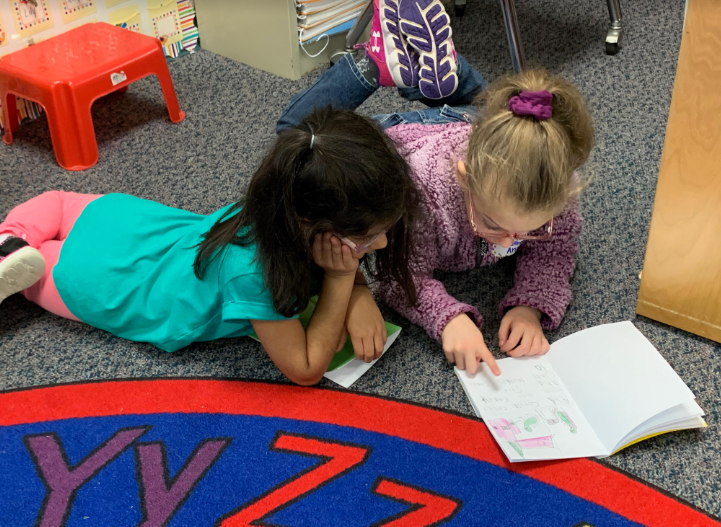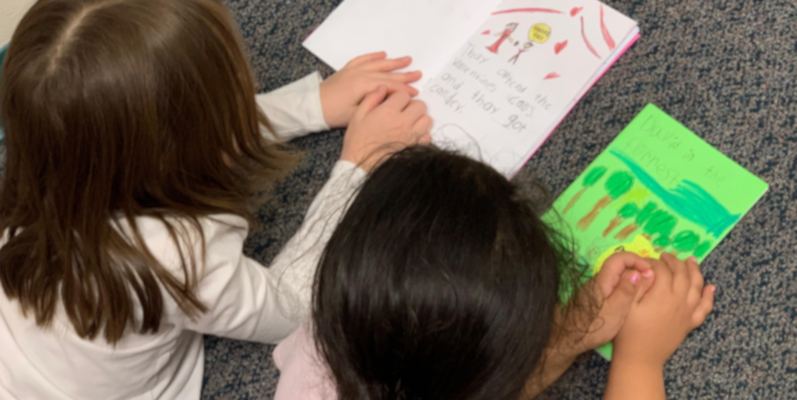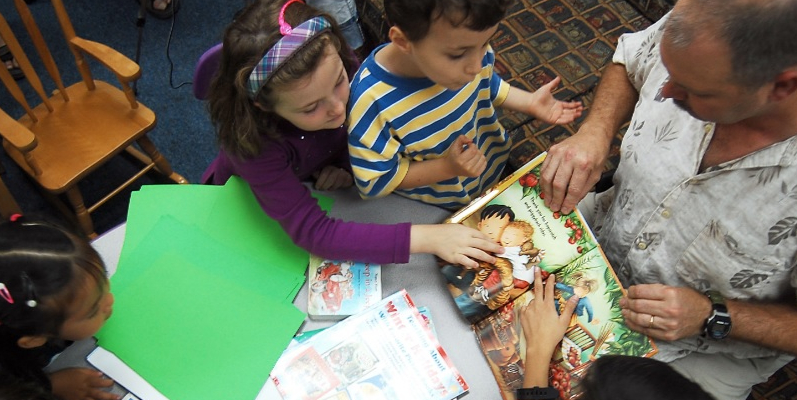A few weeks ago, my good friend Amy Bettis invited me to a publishing party in her kindergarten classroom. It started with donuts and balloons and lots of happy chatter. Her young writers were buzzing with excitement about their own personal “book birthday” celebration.
Amy had her students gather on the carpet and one by one she showcased their books with personalized “Publisher’s Award” stickers on the cover of each child’s book.
They spread out across the room with an inside/outside sharing circle and each duo took turns reading their books to each other. The inside circle of kids rotated until they’d shared their books with most of the writers in the room.

I listened in to one after another, took pictures, recorded kids reading and then got just a few minutes to chat with Amy. It wasn’t enough time for her to share with me the whole process so we made plans to meet on the weekend. I was able to interview Amy for this blog post. The process her little learning community had worked through had to be shared. So many times I hear that young students just aren’t ready or able to write. That’s certainly not the case in Amy’s kindergarten classroom.
They can.
And they do.
Amy shares the journey with her young writers:
What contributed to your kids’ ability to publish books in this way?
I think it’s my belief that students have stories to tell. My conviction is that I need to find a way to do that. I start the year telling them they are writers and readers. And telling them often so they begin to know it and live it every day.
By October, I’m looking closely at where they are as writers. The stages of writing is a place for me to start. From where they currently are as a writer, I begin to show them how to expand what they’re writing about—all with the thought they’ll move to books with pages soon.
In the weeks up to publishing, the entire grading period was focused on books and how they’re constructed from idea generation to final draft. We read a lot of books that acted as mentor texts, Eric Carle, Mo Willems and David Shannon were the most popular for my kids. I teach them first how to draw characters from their favorite mentor texts so they transport those characters into their own creations.
Who are you going to write about? Where will the setting in the story take place? We carefully go through the generating ideas phase. They turn and talk to each other often in an effort to help them commit to begin their writing with ideas they’ve spoken aloud. They sketch their pictures in a beginning/middle/end organizer to help them with organization of their ideas.
Over the six-week period the first four weeks are about writing books. I walk my kids through idea generation, then organizing their thinking using an organizer and from there I guide their paper choice based on what they’re currently using—their choice, but I coach and advise. In the final two weeks they choose one of the books they’ve written in previous weeks as the book they’ll take to a final draft and publish. Since we’ve been trying our hand at books over those several weeks, the kids have plenty of drafts to choose from.
They wrote their books and at week five chose from their collection the book they wanted to take to publishing. I ordered blank books from Amazon and then hand drew the types of lines in their books based on the kinds of paper they were currently using. They also changed their organizing tool to First, Next, Then, Last organizer in an effort to help them stretch their stories.
Revising and editing conferences were organized by which students needed more or less support. The table that needed high support was where I spent more time and yet I still wandered the room and checked in with all my kids. I collaborated with them by asking what kinds of things their character might do between the events they’d already included in their books. That helped my kids to expand their stories.
One example: Alex was working to expand events between “going home and going to bed”. I asked him, “What kinds of things would your caterpillar character do between afternoon and bedtime.” Alex said, “He would watch TV” Amy went on, “I wonder what type of TV shows a caterpillar would watch?” Kids at different tables around the room had heard me and they began to chime in, “Antman, Bumblebee”. Alex landed on writing that his caterpillar and the mom watched Antman and Wasp together. His illustration showed the young caterpillar and his mom laying on their stomachs in front of the TV watching their favorite show together.
I’m pleased that my writers who needed extra support had opportunity to join in this process because they have stories to tell. Evie’s voice coming through in her writing as a student with limited English language proficiency is a celebration all on its own. She worked so hard throughout the process and is proud that she had a book taken to publication.
Everything we’ve learned in both readers and writers workshop up to this point in the year came through in their writing.
I believe that the separate free writing time they have each day gave them the confidence that they are writers, they have a voice and a story to tell. I don’t monitor the free write time because I want it to be a time that’s free to create. They’re happy, they laugh and create and explore their gifts as writers every day.
#YesTheyCan










